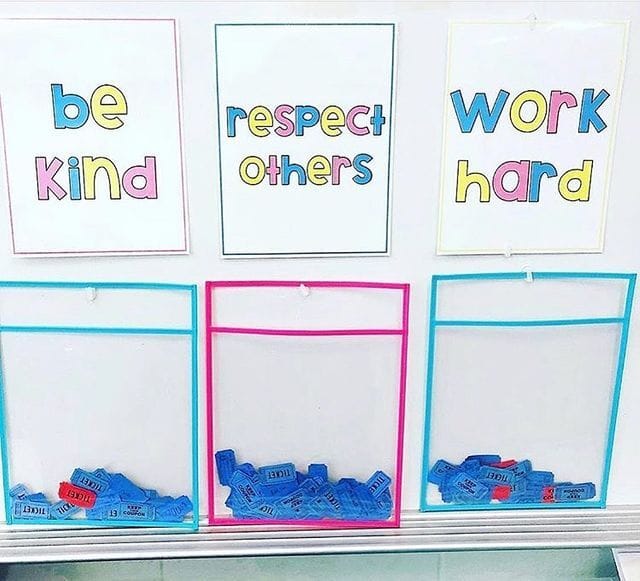- The Thinking Cap
- Posts
- 🎓 6 Must-Try Digital Tools for Every Classroom!
🎓 6 Must-Try Digital Tools for Every Classroom!
How Technology Integration Helps Your Students Achieve Success

What’s Inside This Week:
The Big Picture: 6 Must-Try Digital Tools
Classroom Hack: Enhance your Classroom’s Organization
Connecting the Dots: Links to my Favorite Educational Highlights from this Week

Happy Tuesday,
I hope you're having a great start to your week. In this week's edition of The Thinking Cap, we're diving into the exciting world of digital tools in education. Embracing technology in the classroom is a powerful way to enhance learning and engage students more effectively.
Continue reading below for an in-depth look at some of the most innovative tech tools out there including interactive apps and tutoring tools, along with easy tips on how to integrate them into your teaching.
-Brandon



🏆 6 Easy to Use Classroom Digital Tools
1. Interactive Whiteboard Apps
Tools like Miro and Padlet offer digital canvases for real-time collaboration, brainstorming, and presentation. Using Whiteboard Apps in your classroom can enhance student engagement, facilitate collaborative learning, and allows for creative expression in various formats. They support various multimedia inputs and can be used remotely or in a classroom setting.
These apps not only foster a dynamic learning environment but also mirror the collaborative nature of the modern workplace, preparing students for future team-based scenarios. (Miro) (Padlet)
2. AI-Powered Tutoring Tools
Tutoring Tools are a great way to offer individualized learning support and help students understand complex topics. Another great feature is that they are accessible anytime for homework help, even when you aren’t.
Platforms like Socratic use AI to provide personalized educational assistance. They can analyze questions and offer detailed explanations, tutorials, and related resources. AI-driven tools aren't just for problem-solving; they represent a leap towards adaptive learning, where technology meets each student's unique educational needs. (Socratic)
3. Educational Gaming Platforms
Platforms such as Kahoot and Quizizz turn learning into an interactive game with quizzes, challenges, and educational games. These platforms are at the forefront of edutainment, a blend of education and entertainment, which has shown promising results in increasing student motivation and engagement.
It’s no wonder why most students love playing games in class. As a teacher, I can appreciate anything that makes learning fun and engaging, promotes healthy competition, and improves information retention and student participation. (Kahoot) (Quizizz)
4. Digital Storytelling Tools
Storytelling tools are a great way to encourage a deeper understanding of topics through the creation of a narrative to discuss or explain a topic. Tools like Storybird enable students to create digital stories using various multimedia elements.
Storytelling fosters creativity and narrative skills, enhances digital literacy, and allows students to express themselves in unique ways. (Storybird)
5. Educational Podcast and Video Creation Tools
Platforms like Spotify for podcasting and Adobe Spark for video lessons empower teachers and students to create their own audio and video content.
These tools democratize content creation, enabling students and teachers to become creators and not just consumers of information, fostering a sense of agency and creativity. They encouragee the development of communication skills, provide a platform for sharing knowledge, and diversify the modes of learning. (Spotify) (Adobe Spark)
6. Assessment and Feedback Tools
Prompt and informative feedback is a critical tool to encourage learning in your students. Real-time feedback and assessment tools are critical in offering a personalized learning approach, allowing educators to meet students where they are in their learning journey.
Tools such as Formative and Google Forms allow for innovative ways to assess and provide feedback, including real-time responses and interactive assignment formats. They are a great way to streamline the assessment process and support a variety of assessment types to cater to different learning styles. (Formative) (Google Forms)

✏️ Steal this Classroom Hack:
👍 Why I love this hack:
What I love about this hack is that it’s a great visual and interactive way to recognize and celebrate positive behavior.
Clear folders with reward tickets allow students to see their progress and feel proud of their kindness, respect, and hard work. It's versatile, too; the rewards can be tailored to any age group, making it a universal tool for fostering a positive classroom culture.
This system not only motivates students but also creates a tangible reminder of their achievements, encouraging a continuous cycle of positivity and effort.
✅ Have a classroom hack that you would like to share? Reply to this email and let me know what awesome hack you’ve created. (I can even include it in next weeks newsletter - with a shout out, of course!)

📚 Highlights from this Week:
Top Teacher Picks for Tech in the Classroom: A more detailed look at tech tools to use in the classroom. (Link)
Onward: Onward addresses the issue of teacher stress and offers a practical way to reduce burnout in education. (Link)
Zero: Zero explores the history and significance of the seemingly simple number zero, from its mystical origins to its pivotal role in mathematics. (Link)
Mathcation: Use code 5Dollars on a Monthly Membership to get your first month for just $5! (Link)
Thank you for reading The Thinking Cap!
Please share this email if you got something out of it.
Send me a reply if you have something to share with me and I will respond to you. (Seriously, I read and respond to all my replies)

